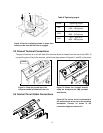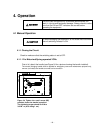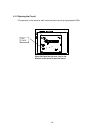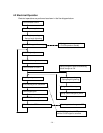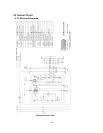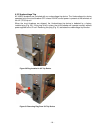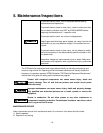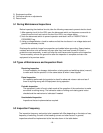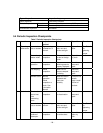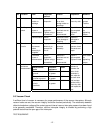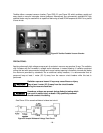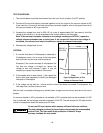- 25 -
3) Equipment condition
4) Corrective actions or adjustments
5) Date of work
5.1 During Maintenance/Inspections
Before inspecting the electrical circuits, take the following measures to prevent electric shock:
1) After opening circuit for the VCB, open the disconnect switch on the power source side to
place the main circuit and control circuits of the VCB in no-voltage status.
2) Lock the disconnect switch to prevent operation and label it with an "INSPECTION IN
PROGRESS" tag.
3) Using a voltage detector, check to make sure that the circuits are in no-voltage status and
ground the necessary circuits.
Discharge the residual charge from capacitors and cables before grounding. Space heaters,
resistors and other units will remain hot even after they have been turned off. Install a
protective cover temporarily, or wait until after the units have cooled to perform the inspection.
To ensure safety, remove the ground line after the inspection is complete and return the
equipment to its previous status.
5.2 Types of Maintenance and Inspection Work
Receiving inspection
A visual inspection for damage, deformation, missing parts and switching status (manual)
to make sure that the product is in the same status as when it was shipped.
Patrol inspection
An inspection performed during patrols to check for abnormal noise or odor and see if
there is anything wrong with the equipment during operation.
Periodic inspection
The equipment is shut off and a check made of the operation of the mechanism to make
sure there is nothing wrong. The lubrication status of sliding and rotating parts is also
checked and the mechanism is lubricated if needed.
Unscheduled inspection
Inspections that are implemented as required.
5.3 Inspection Frequency
The inspection frequency and points to be inspected will differ depending on the status of use,
frequency of switching, the size of the breaking current and other factors. In general,
inspections should be implemented at the intervals shown in the table below.



